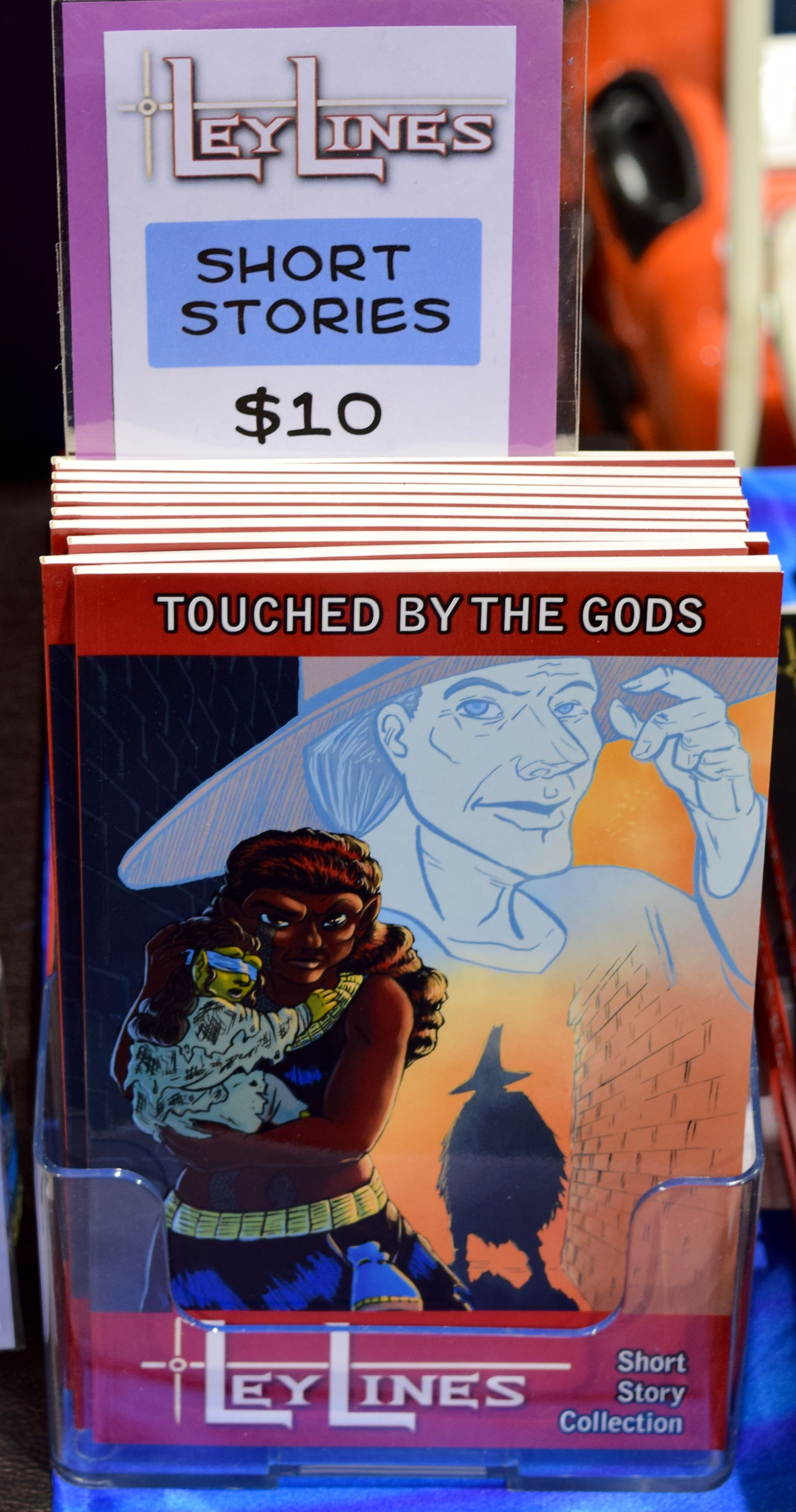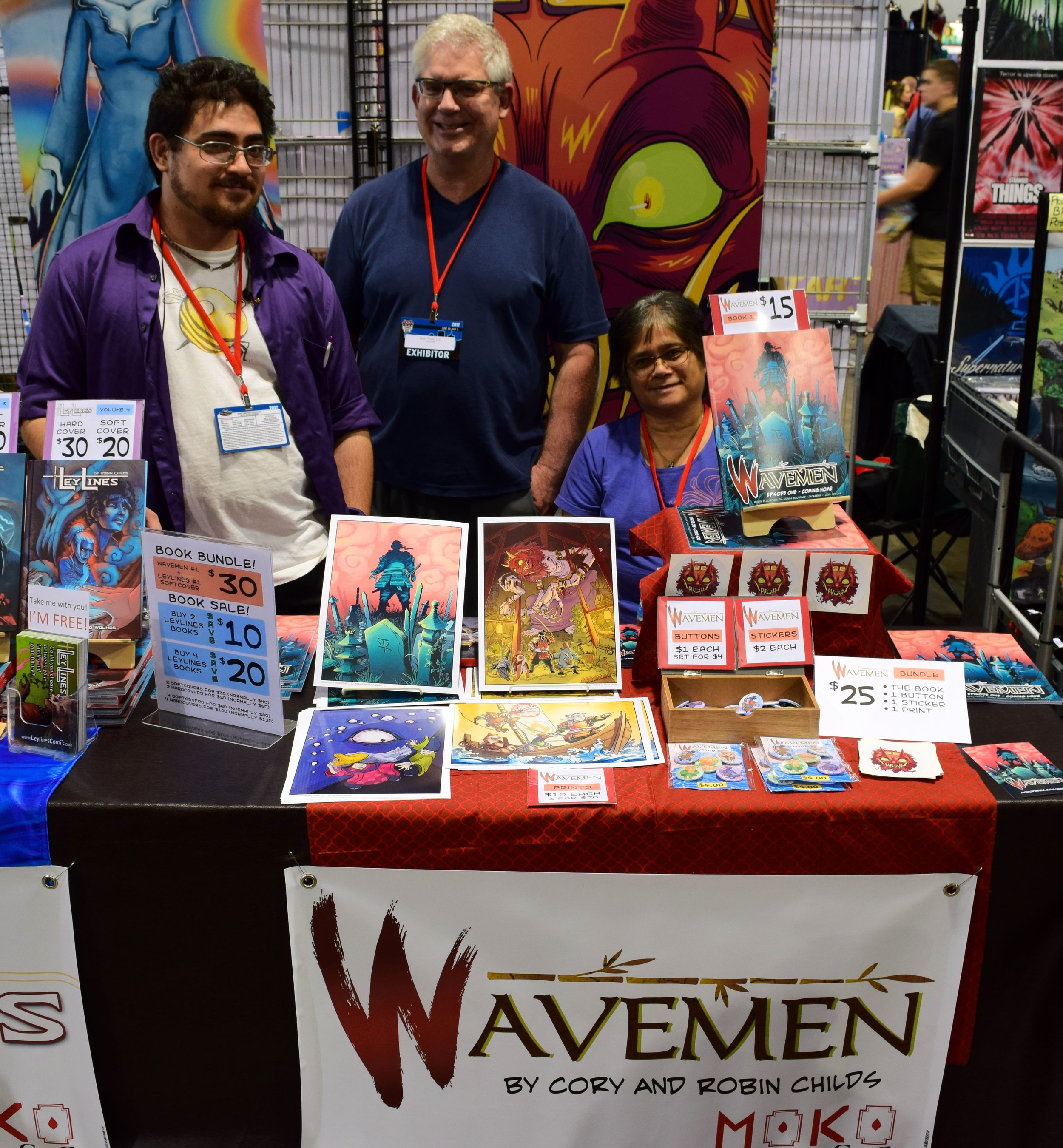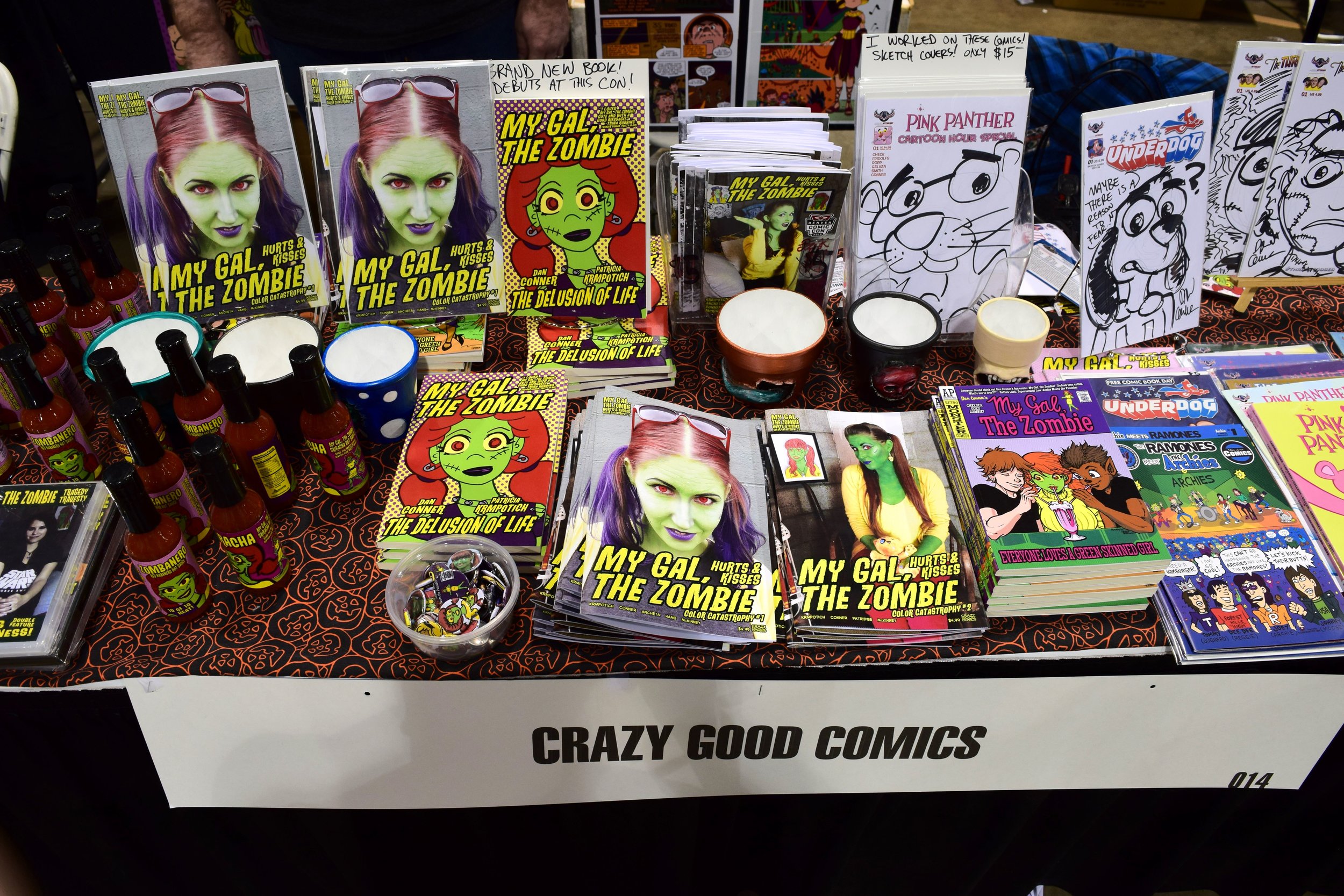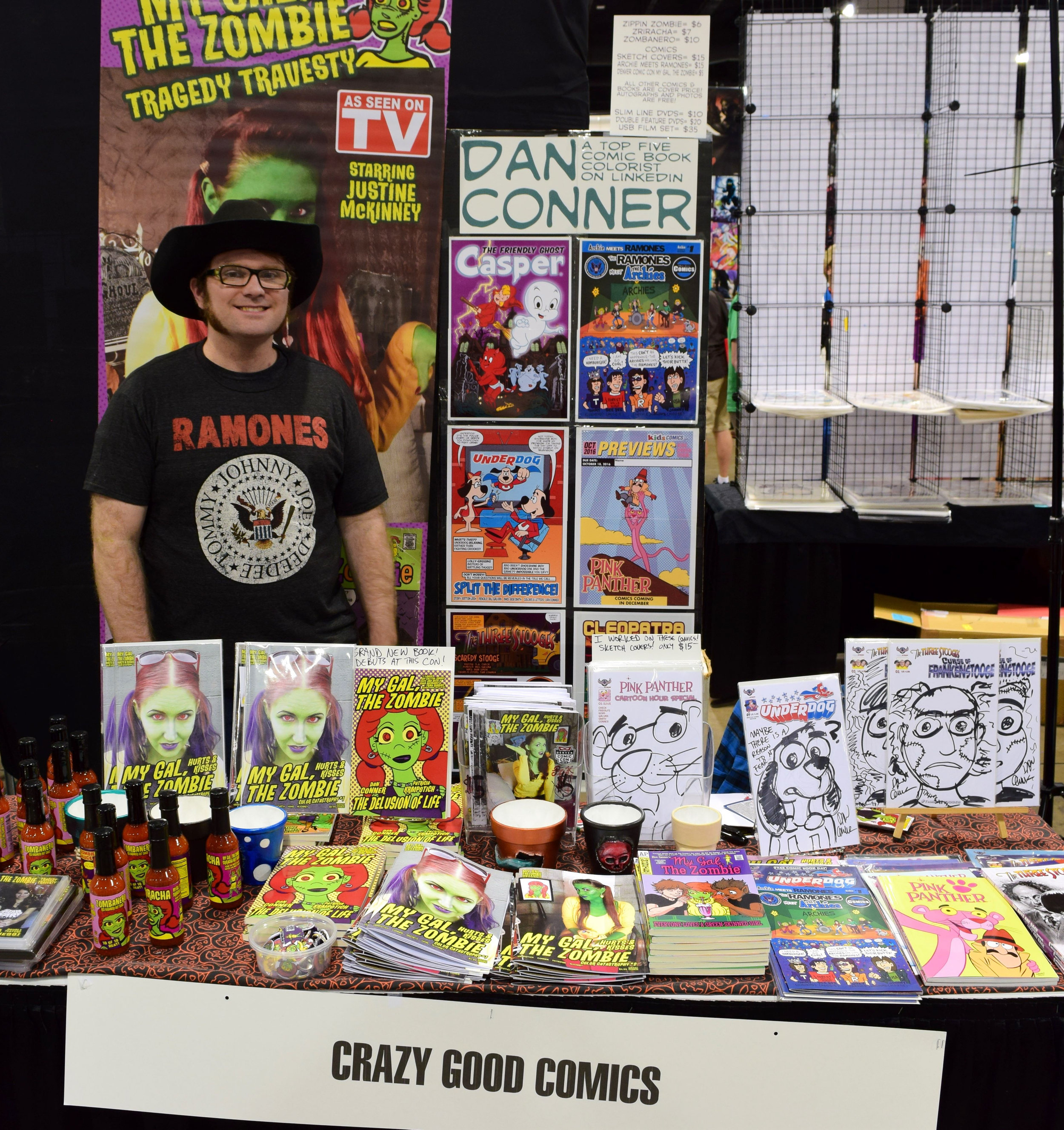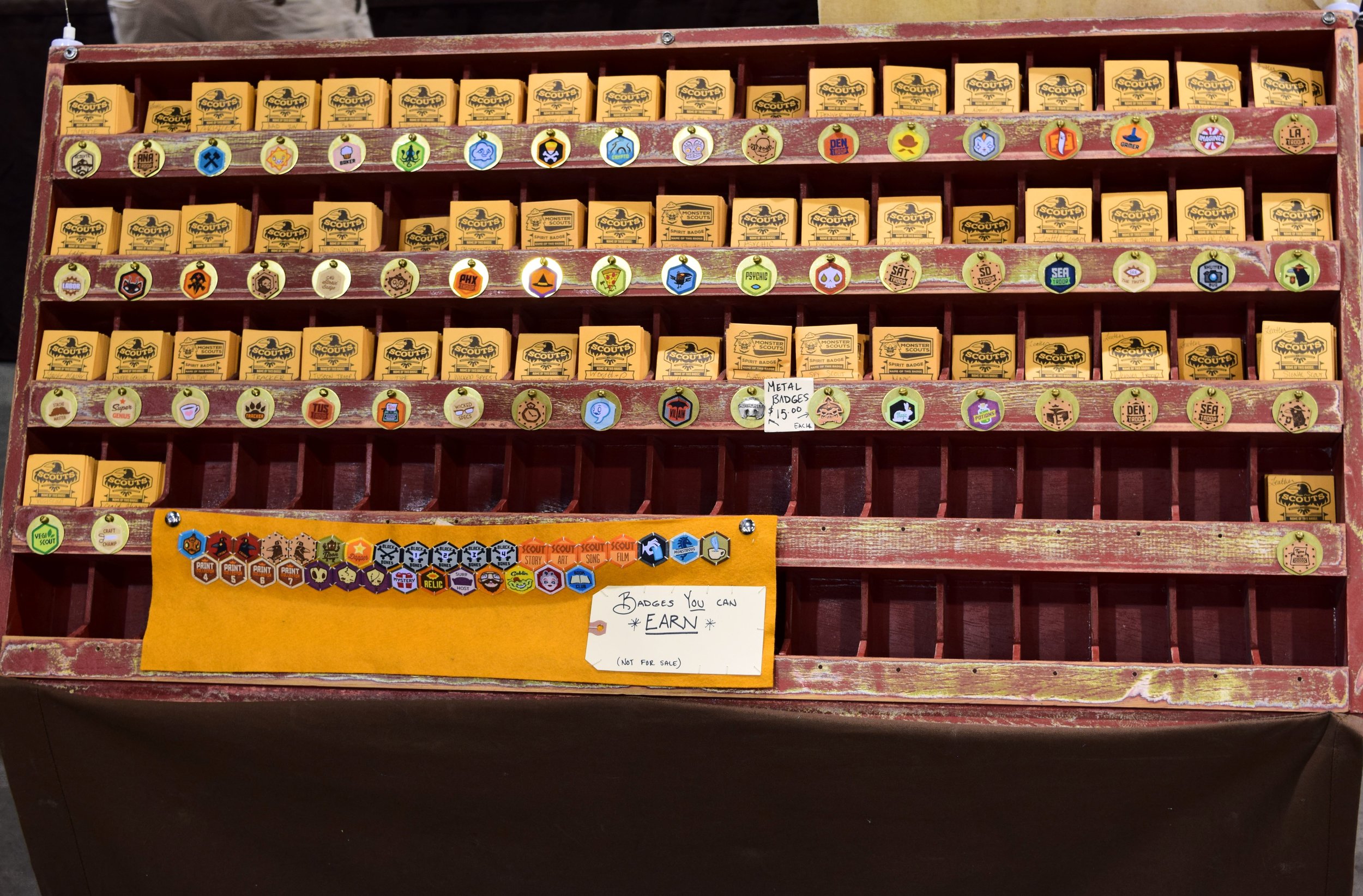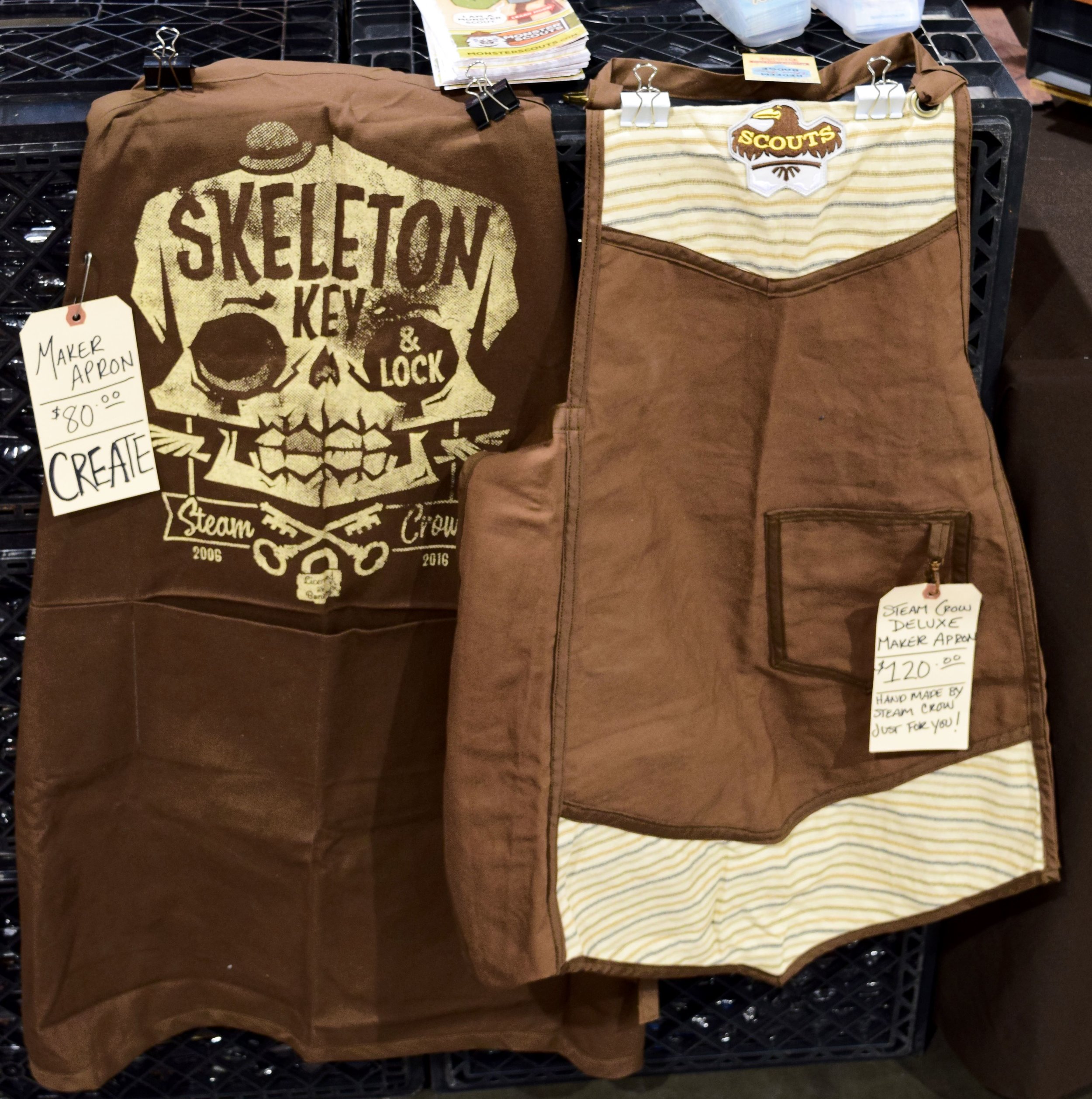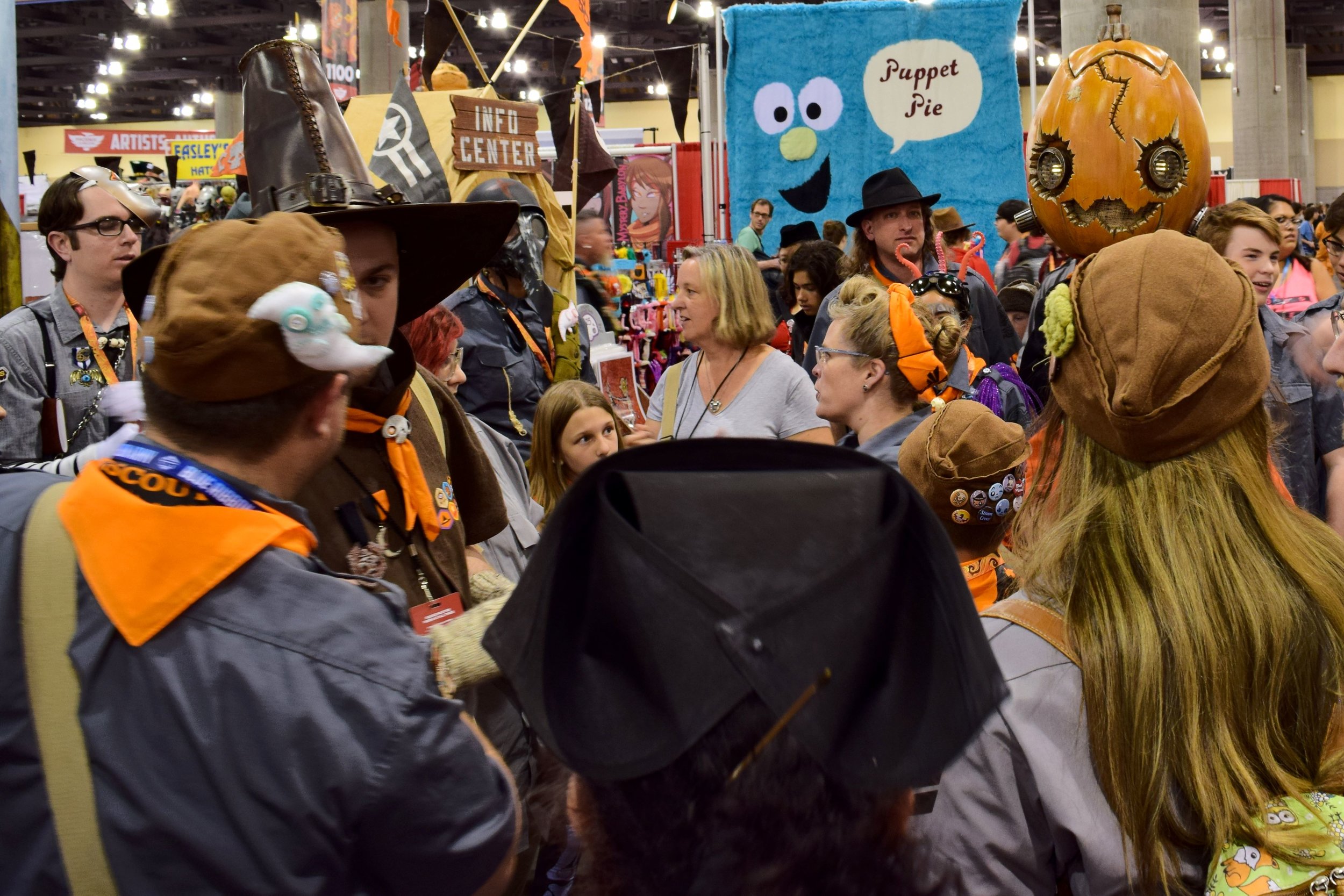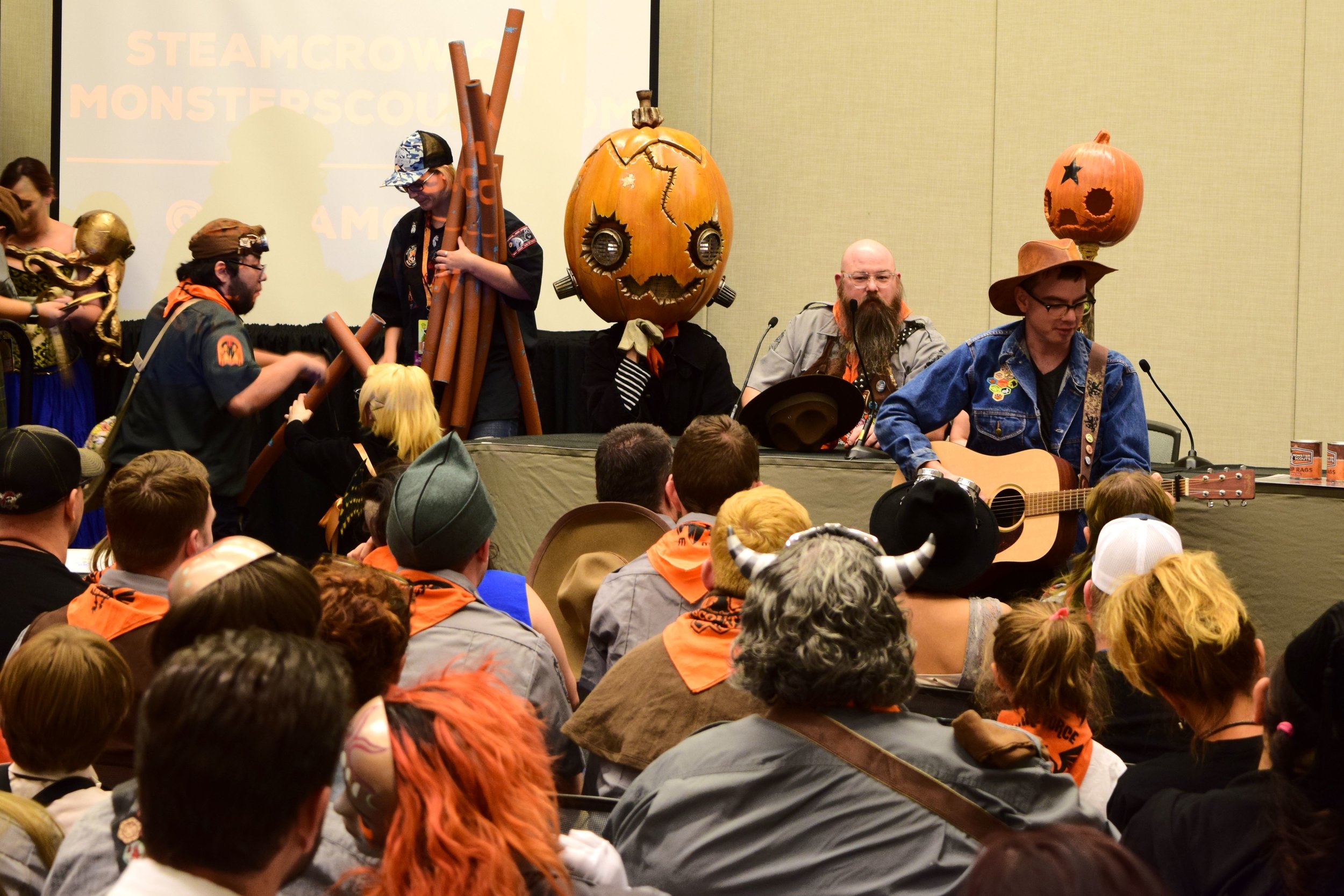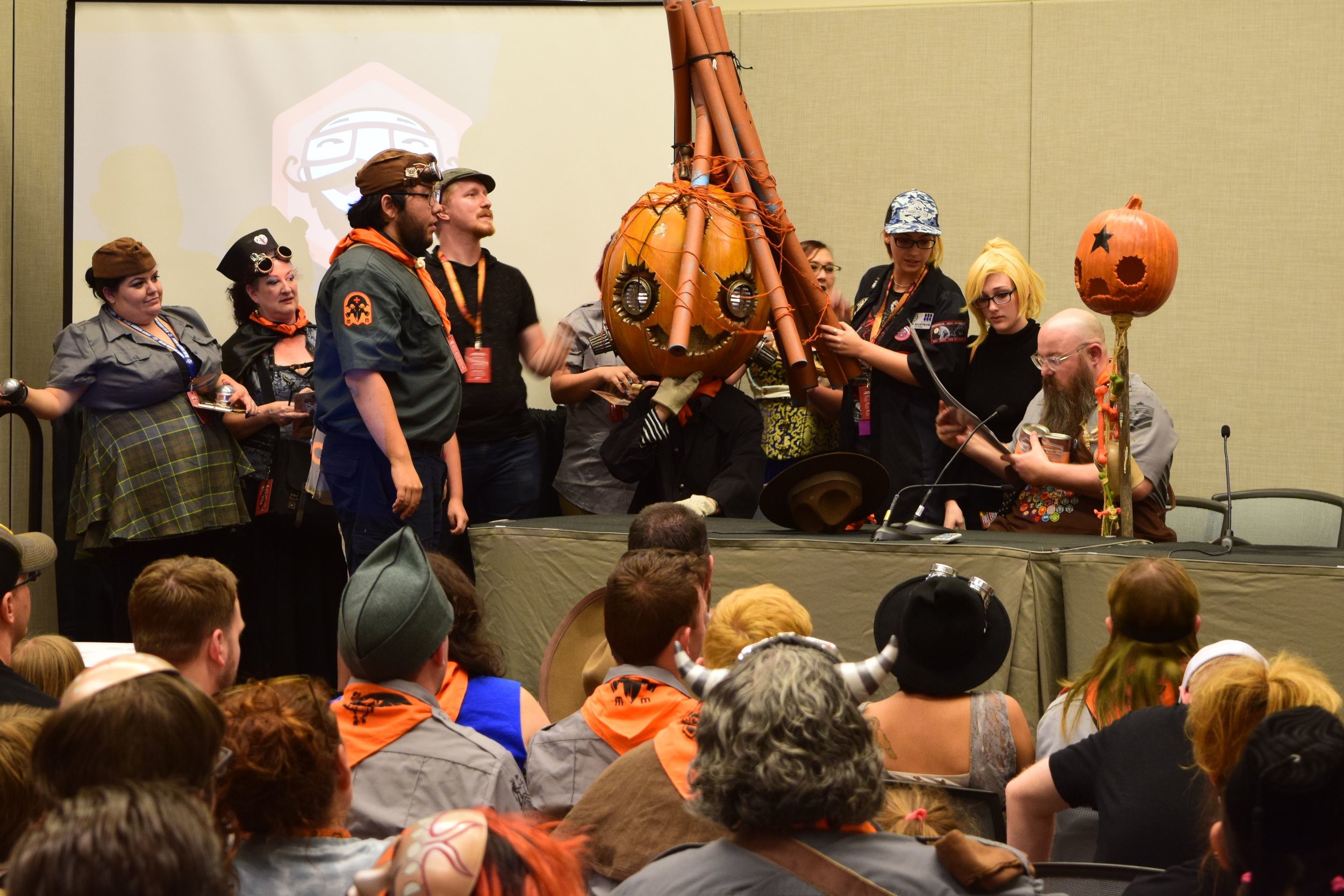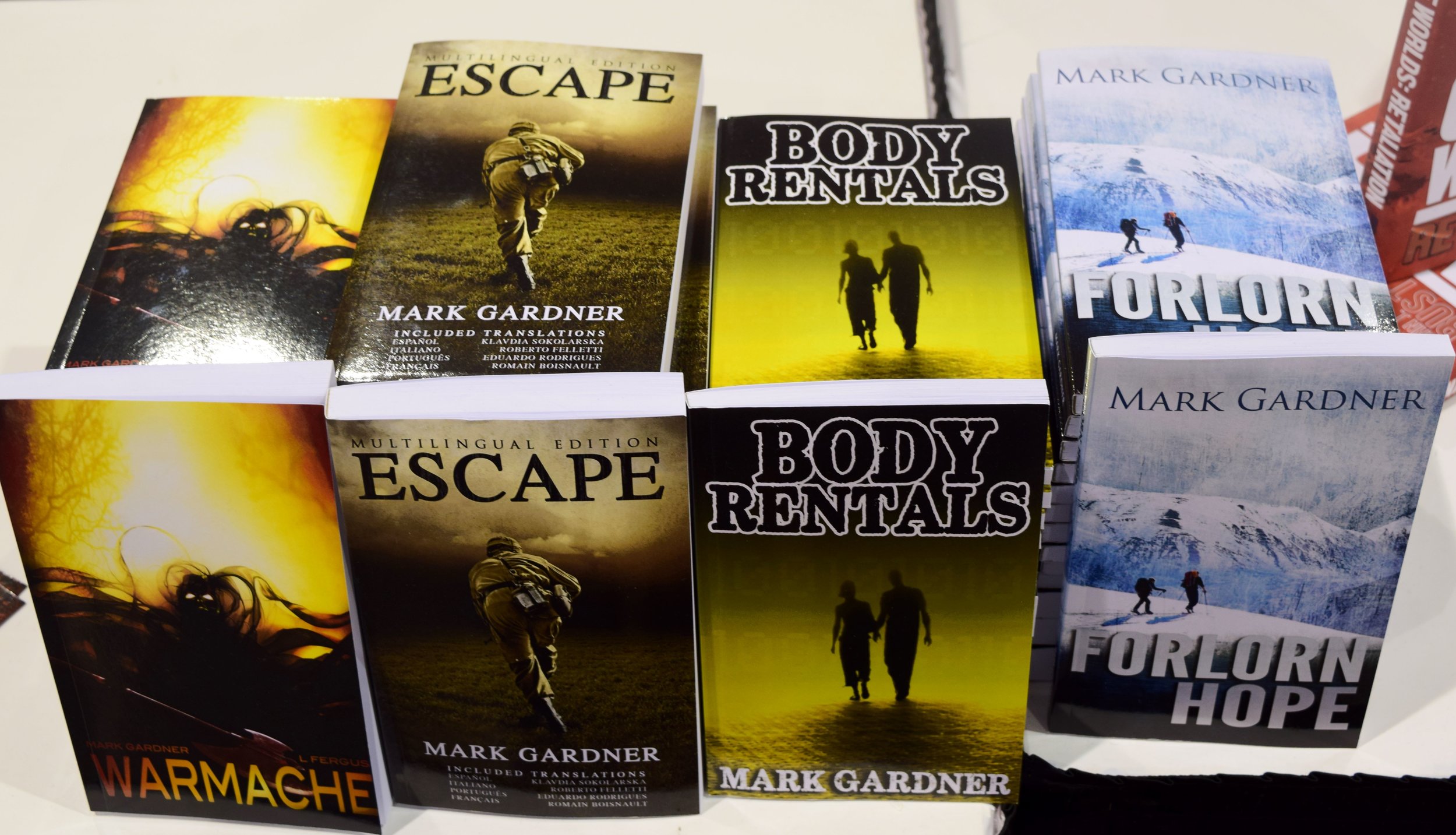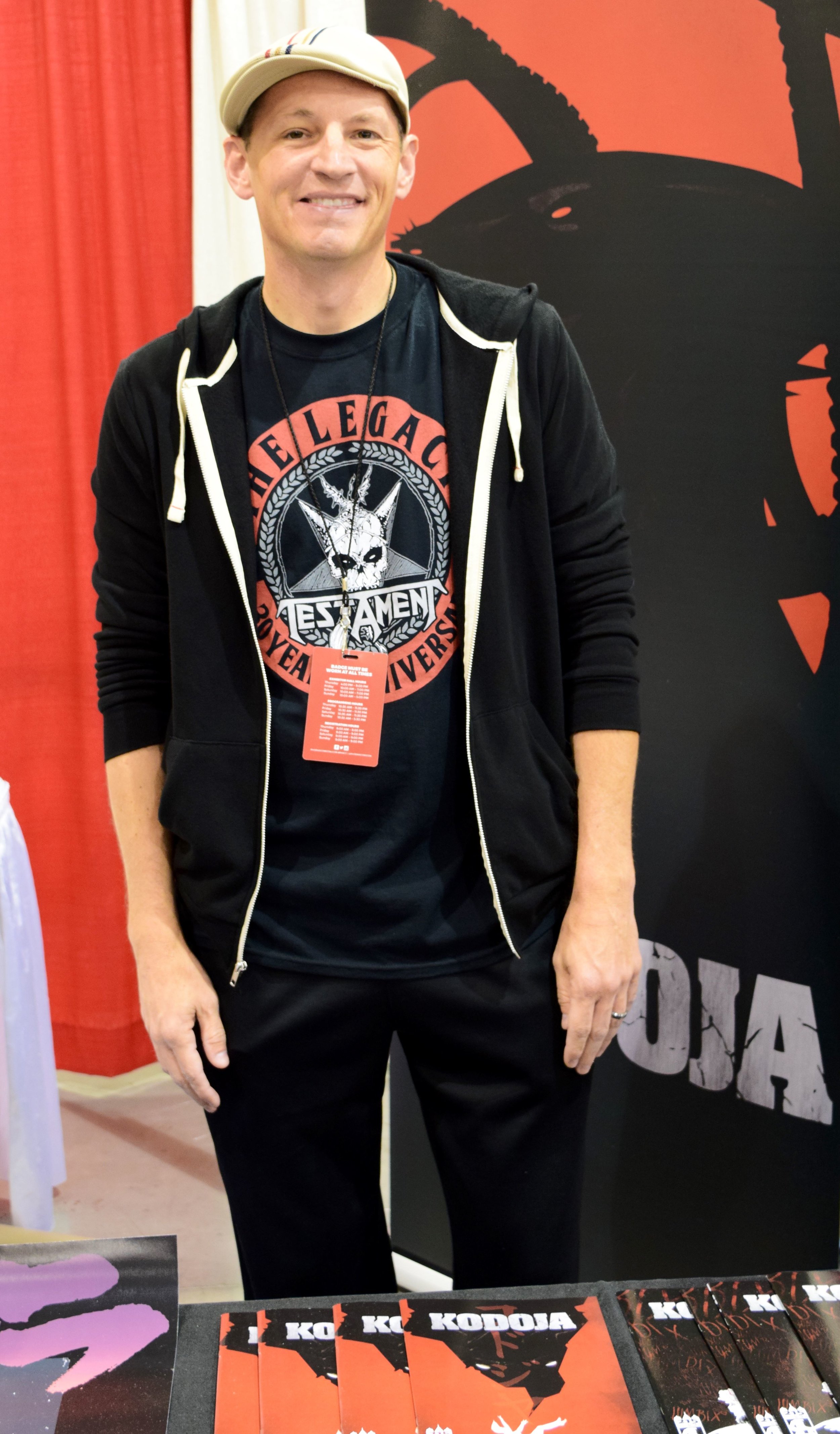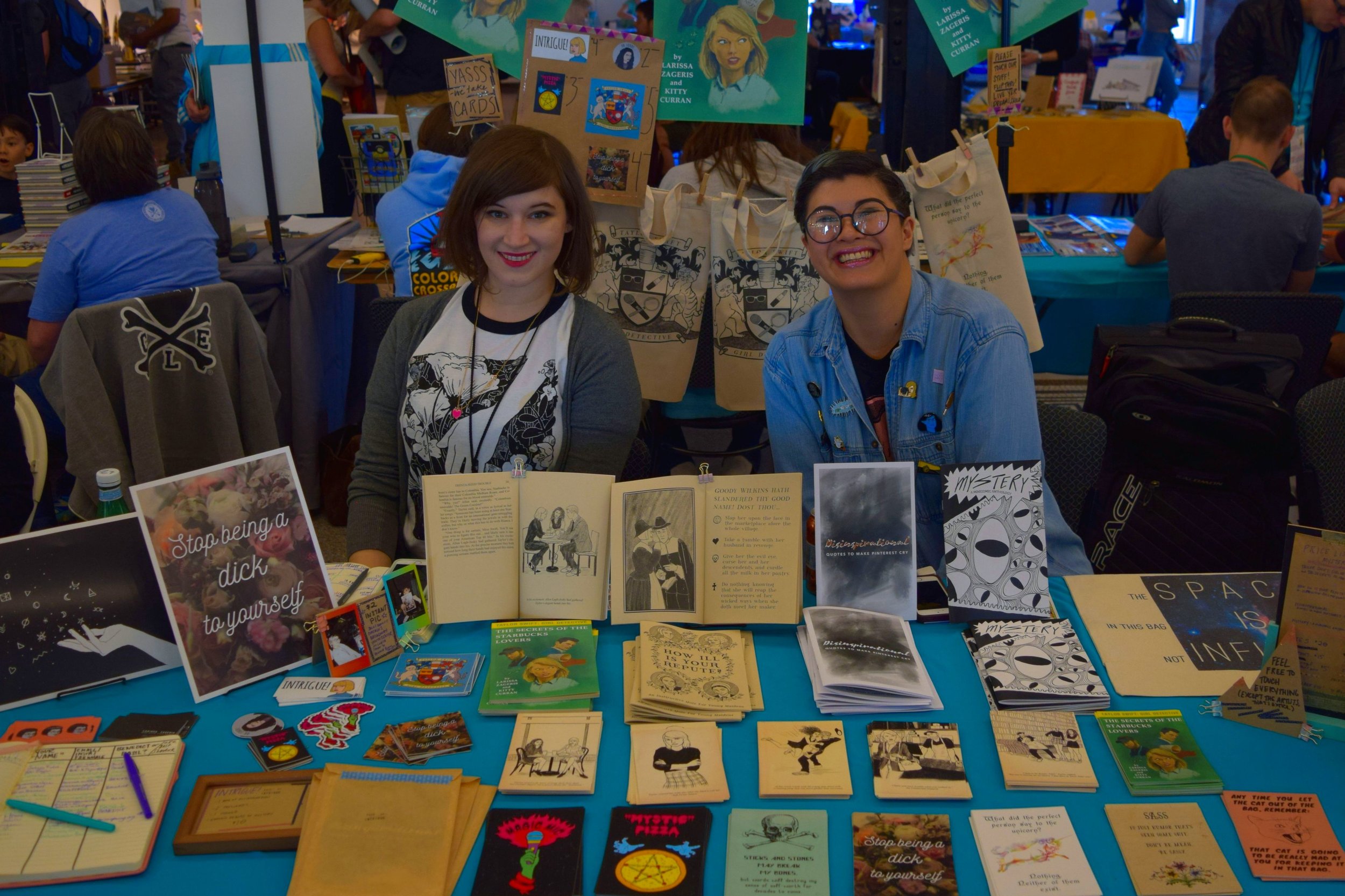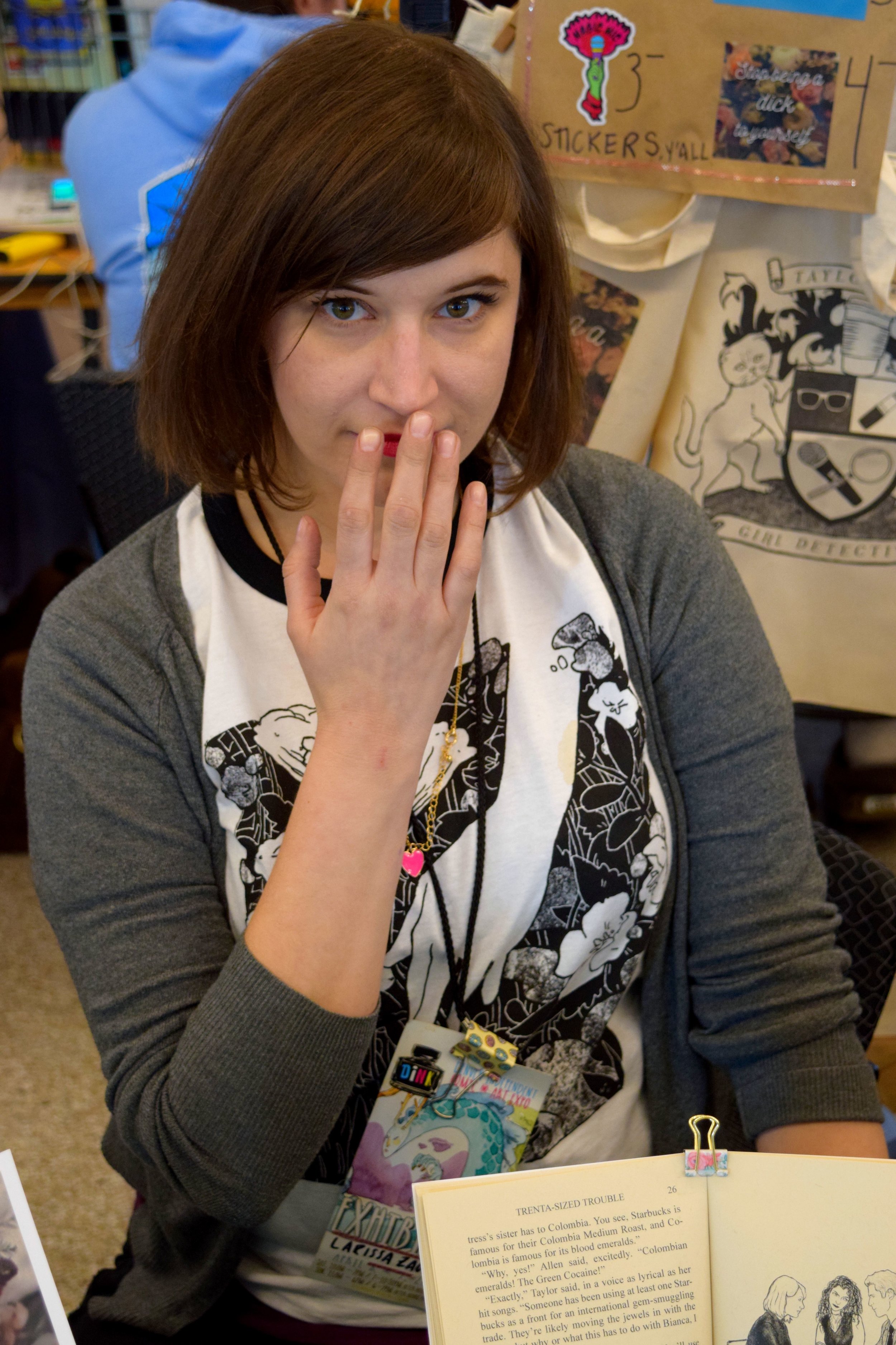Gareb Shamus Talks About ACE Universe at Ace Comic Con AZ
/Written by Ryan Hall & Emily Davenport
Gareb Shamus
Gareb Shamus is the founder and former Chairman and CEO of Wizard Entertainment and the co-founder and current CEO of ACE Comic Con. He was the publisher of several magazines including Wizard, InQuest Gamer, ToyFare, and Anime Insider, among others. At the recent Ace Comic Con: Arizona (Jan. 13-15, 2018), Nerd Team 30 had the chance to sit down with Gareb and talk about his new ACE line of conventions: how they started, what comes next, and how he wants people to remember the ACE Universe.
Ryan Hall: Thank you for sitting down for an interview with us. How are you doing today?
Gareb Shamus: I am doing amazing. It’s game day and game day is the best day of the year. When we get to bring all of our fans the people we have been working with for months, even up to a year in one place and one time. There is no tomorrow it’s all today so it’s really exciting.
RH: Finally get the big payoff.
GS: Yeah. When you can bring everyone together in one place and one time, that payoff, that excitement, that energy that you have is just phenomenal.
RH: You said up to a year. How long have you been working on putting this particular convention together?
GS: So we started at the beginning of 2017. When you are looking at the type of celebrity talent we are working with, even comic book talent, everybody is very busy with all the schedules that are going on - the shooting schedules, their family lives, stuff like that. You really have to get on peoples calendars pretty far in advance. And that is why our business model is actually a little bit different from the way a typical comic convention works - in the sense that normally you rent the venue and then you see who’s available. But because of our going into arenas, our first thought was "who do we want at the show?" Who is that talent, who is that franchise that we want to get to make fans excited about it? So once we get the talent and the commitment from the talent we book the venue and the marketing and promotion. We kind of work in reverse. So we don’t book an event until we know we have the talent locked up. That’s why for us the shows take a long time to produce because we have to be very, very sure when it comes to the talent. So we’ve got a number of events coming out in the future but we have had to put offers out to the talent a long time ago to secure that and make it happen.
RH: Very cool. So that may be one of the things that is more difficult about doing this type of convention. Starting a brand new convention, specifically in an arena, what are some other things that were different from starting a typical convention? Were they more simple for you to put on? More difficult?
People waiting to get into Ace Comic Con AZ, at the Gila River Arena.
GS: Well the thing about it, when my brother and I started the company, we didn’t have any legacy issues, we didn’t have any old contracts we needed to fill, and we didn’t owe anybody anything. It was one of those things where we could just start fresh. And we said to ourselves, what are the problems that comic-cons have had in the past? What issues that fans have constantly said "hey, I wish it was this way" or "I wish it was this way". And what were the things we wanted to see, you know? What are the things that people wanted to see an abundance of, or things that shows did just for the sake of doing it but not because it really had an impact. And we were kind of able to craft it right from the start, part of that was who you want to see. When you’re a fan it’s like "oh my god I really want to see this celebrity or that celebrity" and that’s kind of where we started. Then the other thing we wanted to do in part with that is a much more curated experience. With so many types of these events... It’s rent a hall, try and sell and push as much stuff into one building at one time as you can - and we didn’t want to do that. We didn’t want to have hundreds and hundreds of vendors and hundreds and hundreds of comic book artists. What we wanted to do was curate it and say "hey, if we’ve got Tom Holland from Spider-Man and Chris Evans from Captain America here, what can we do with a lot of the Marvel superheroes and the people who have made an impact on that space?" So it’s like oh, let’s get Stan Lee, Todd McFarlane, John Romita Jr., John Cassaday. When you look at the list of people that we have been able to bring in that all have something to do with the Marvel universe or maybe something to do with those characters, for us it was like "ok great- let’s go to the retailers we want to bring in". Instead of bringing all the same type of retailers, how can we bring a diverse group of retailers in? Not all just selling the same thing, and not only that - let’s get the best ones as opposed to some that may not be the best or may be repetitive for us. How do we create more of a unique experience? Then the other thing was to be very open to kids, so we have a whole kid’s comic-con and we are really trying to bring that family atmosphere. Coming to an arena also, it affords us a lot of other amenities that you don’t have at a typical convention center. Number 1 is the programming. We are here sitting, and there might be a panel that’s going on that we could watch - but let’s say we want to walk the floor first, or maybe we are in line for an autograph, or maybe we are on the outer skirts talking to the writers or artists. But there’s the jumbo-tron in the middle of the arena and closed circuit TV’s all throughout, and no matter where you are you can watch what is going on. Then the last part is we really want to encourage social media, so for a lot of our show we want people who are not here to feel like they are here. We know that there is a finite number of people who could be here physically and there is an infinite number of people who would want to be there, and we want those people to still feel like they are a part of this community. We are super open and encouraging people to take out their cameras, shoot what they can and show it to their friends out there.
RH: That’s great. That’s the best way to word-of-mouth promote it, people actually seeing it out there so they actually want to come to then next event.
GS: Absolutely. For us it’s about building a community. So we’ve been in a situation where when I started almost 30 years ago, being a geek or a nerd was actually a very derogatory term, right? We were the outsiders, we were the losers, we were the people to stay away from. It took decades for us to get accepted out there - and now we are - but the next phase for us is to build it into a community. So that not just everybody feels like they are accepted, but now they’re a part of something even bigger and that there is this connection between everybody. That’s what we are going to be doing.
RH: Very good. Now one thing that we noticed with both this one and the New York convention, you tend to be a little more themed, like you said, building around the talent that you get, so this one seems more Marvel themed, New York seems more DC themed, is that a fair assumption?
GS: Absolutely. Yeah.
RH: So what kind of ideas do you have for conventions going forward? Would you plan on maybe an independent convention, or keeping it more with the big 2?
GS: So from our perspective because of the nature of the movie and television business there are constantly new themes that are coming out or new shows that are coming out or there is so much depth to the current Marvel and DC universes out there, so from our perspective it is a combination of which talent we can get or have access to and or which areas or themes we can do that we feel are big enough to attract and audience people care about. But it is all about the passion of our fans and our passion in terms of what we want to do and what we want to provide. So we are looking at a lot of different areas.
Ace Comic Con AZ as seen from above.
RH: Very cool. So this is the 2nd ACE Convention ever. The first one being in New York - which seems like an obvious choice. Why choose Arizona for the 2nd one?
GS: Well the first one we wanted to do close to home. We are from New York, we have a lot friends and family there. We wanted something because it was a new model, it wasn’t proven, it wasn’t tested. We knew there were going to be a lot kinks that needed to be worked out. So, for that it was really great to do it there. The arena was really great. And for both New York and Arizona, because of what we wanted to do - it was very different right? So for an arena, they were taking a chance on us in the sense that they have never done anything like this. They are used to having sporting events, or concerts, or ice skating shows, or things of that nature. They haven’t cut up their space in this way. The people who work here aren’t used to dealing with a 3-ring circus with stuff going on all over the building. So the people in New York and here in Arizona were really open and really accepting in terms of what we wanted to do and how we wanted to do it, because it really took management a long time to figure out "hey do we really want this in our building? Do we really want to work hard?" Because when you do the concerts you know how it works, when you do a sporting event you know how it works. You have 40+ hockey games a year and they know what game 2, 3, 4,5 and 40 are going to look like already. Arizona was a unique situation. We wanted to be in a warm climate because, you know, it’s cold out there in many parts of the US. They were just very very open to wanting to do something special. It was a combination of the two that worked out very well.
Emily Davenport: So did you have other cities that you were thinking of going to where people weren’t as open to the idea of a comic-con coming?
GS: Yeah. I mean we had spoken with a lot of cities. We have run comic-cons in almost 30 cities out there across the US, so we had spoken to a lot of them and a lot of them weren’t ready to do it or they didn’t have the dates available. A lot of them - most of them - didn’t have the dates available for us because it is hockey season, basketball season, you know? A lot of arenas are multiple use so they have basketball and hockey, so it was tougher to get. In this particular arena they have hockey, but not basketball, so there was a little bit more time in there where we could do that. But yeah, we were talking to a lot places out there.
RH: So going forward with these, what is your target goal for maybe how many events per year or did you have something in mind?
GS: We don’t have a target. For us it’s being very opportunistic. We have a lot of offers out to a lot talent. Once we get commitments we can figure out the best place to do them. But our goal is to keep going back into the markets around the same time of year. We love Arizona, we’d love to come back, we want to come back. Whether it’s January or February next year or December, we are going to try and time it to a similar timeframe because we love the audience here. Whenever we go into a market, we love the fans and we want to be able to keep bringing them back for an experience. As they support us we want to be able to support them.
RH: The convention is obviously an area of focus now, but what other areas of the business are you interested in going into with ACE? Are you interested in maybe being a guest at other conventions?
GS: So for us right now it is focusing on our own events but also focusing on also the streaming of all the content as well. So we are definitely going to be a 365 day a year streaming content platform. We want people to know we will get there over time where when the show is over they are still going to have a great excuse to be engaged with ACE and the ACE universe.
A packed audience watches a celebrity panel at Ace Comic Con AZ.
RH: That’s great. Do you plan creating original content on the website between events or mostly just publishing everything you have accumulated from those active days?
GS: Oh it’s going to be a combination of everything. We are recording a lot of stuff that is going on at the show that we haven’t had the chance to livestream at the event. So it’s a combination of that and of original material. It could be curating other material that we find interesting and kind of putting our spin on it. So it will run the gambit of a lot of different content. And much like our events - where it’s a curated event - so will be our streaming content.
RH: What would be a dream booking for you? Someone that you haven’t been able to have at your convention but that you would just totally fanboy out if they showed up?
GS: Well to me it’s Robert Downey Jr. If ever there was a person that embodied the character, it’s hard to compare. Although I will tell you Gal Gadot now, Wonder Woman is certainly up there but also a lot of people have Chris Evans as Captain America even Tom Holland as Spider-Man on their list. In a short period of time you feel they got that right with him. But a lot of times it’s just the people who embody the characters and Robert Downey is definitely at the top of that list.
RH: So there is obvious focus on comics, pop culture, movies- what other areas are you interested in bringing to ACE? Are you interested in bringing in gaming and anime?
GS: Yeah. You know, I think over time as we get more comfortable with what we are doing and as we start developing our audiences and fan base and things like that. In my past I published magazines in a lot of different genres out there, so luckily my brother and I have developed relationships with lots of different industries all over the world. The great part is that we have done it for so many years that over time we want to be able to bring in all those people and resources and excitement that we have been able to cultivate over two to three decades of being in business, we would love to get them into the ACE universe now. So yeah I wouldn’t count anything out on our side.
ED: What are you hoping that fans take away from this event?
GS: We hope the fans take away that they felt they were part of something that was the start of something unbelievable. They could look back years from now and be like "I was there for that", like, "this happened and I was there. I got my cell phone footage to show, I got my selfie, I got my photo" - that they were here at the infancy of something that is really going to change the dynamic of this world in a way that they will only know once it has happened.
ED: Wonderful. Well thanks so much for sitting down with us.
RH: Thank you for letting us be part of the history.
GS: Thank you guys so much. I really appreciate it.
Todd McFarlane takes a selfie with Stan Lee at Ace Comic Con AZ.



































